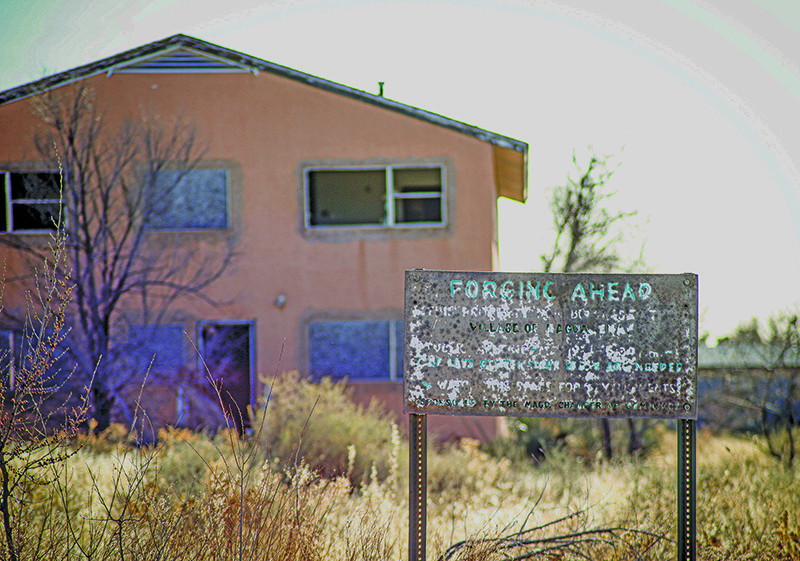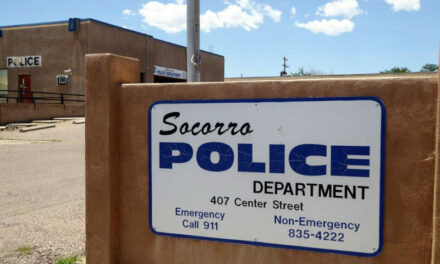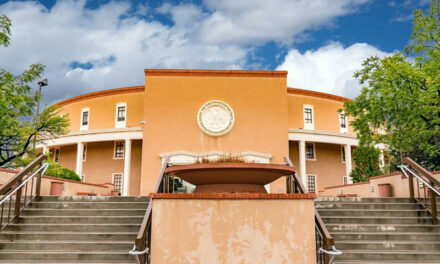After decades of failed attempts to remedy the property, the former Bureau of Indian Affairs dormitories in Magdalena now have funding to start removing asbestos in three buildings scheduled this spring or summer.
“I’ve been working on this for ten years, looking for different funding sources,” Mayor Richard Rumpf said. “They need to be removed, unfortunately they have been deteriorating for many years and other plans fell through.”
The dormitories built in the late 1950’s sit on approximately ten acres inside village limits on Kelly Road. The thirteen buildings served as living quarters, offices, garages and recreational facilities. The dorms housed Indigenous children from Alamo and surrounding areas until it closed in 1985.
The Village of Magdalena purchased the property from the BIA for $10,000 with plans to renovate the property. In the mid-90s, initial assessments indicated a renovation was possible, but limited funding has left the buildings unmaintained for almost 40 years. Asbestos and lead contamination poses health and environmental risks.
The Village of Magdalena, the New Mexico Environment Department Brownfields program and Groundwork Studio are partnering up for the first stage of remediation and the vision process concurrently. The NMED Brownfields program is designed to get blighted properties back in service to the community and contributing to the local tax base.
A representative of Groundwork Studio said that they were engaged by the NMED Brownfield program in January to conduct a visioning process for the redevelopment of the dormitories, which is funded by an EPA small technical assistance grant, at no cost to the village or Alamo.
“This visioning process is in its very early stages, and we understand there may be concerns about trust, transparency, authenticity and follow-through. We strongly encourage all community members, and anyone connected to this project to share their ideas and concerns regarding the property’s history, current conditions and future opportunities so that any proposed redevelopment can share stories meaningfully and meet real community needs,” NMED Brownfields program and Groundwork team wrote in an email. “Our team is prioritizing outreach to the Alamo Chapter and other tribal community members who may have a connection to the property or who could be affected by its redevelopment. We encourage participation at a level that the Chapter and other tribal community members are comfortable with and feel appropriate.”
NMED Brownfields program and Groundwork wrote that, at this point, NMED can fund remediation of the asbestos but is not permitted to demolish buildings except under special circumstances. They are earmarking additional funding to abate asbestos in another group of buildings this fall but that implementation will depend on funding and community support.
The NMED Brownfield program has recently applied for additional technical assistance through the US EPA’s Land Revitalization technical assistance program and, if accepted, will focus on putting together a feasibility study and road map of funding possibilities for redevelopment. They expect to announce if they receive the funding by late March.
Groundwork Studio has previously worked with the NMED Brownfields program on visioning for the Old Grant County Jail in Silver City and the Eastern Plans Council of Government regions. They wrote in an email that they “specialize in authentic engagement strategies, community planning, site master planning, participatory design, and plan implementation. Groundwork Studio’s team has unique experience tailoring engagement to prioritize voices from groups who are often underrepresented, with special sensitivity to lived experience.”
Community members are encouraged to take a survey of the property. To access the survey and to learn more about the project please visit: https://arcg.is/1u1zr90
Editor’s note: Tamara Bicknell-Lombardi, staff reporter, contributed to this article.





















